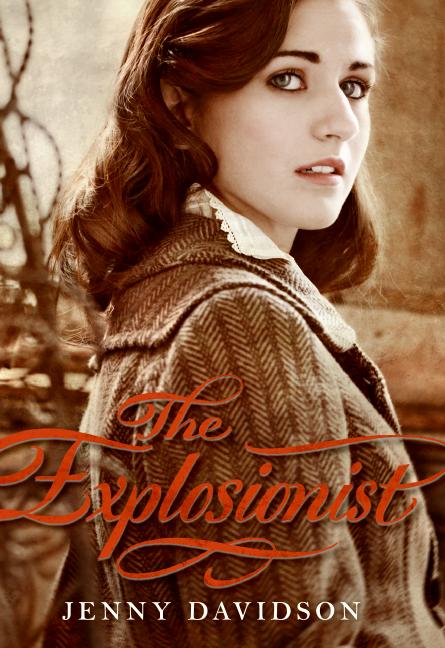The Explosionist is set in an alternate Edinburgh in 1938. It’s the story of Sophie, a fifteen-year-old girl growing up in a world on the edge of total war. The Hanseatic League is in danger of being engulfed in another Great War, only a generation after England fell to Europe. Not since Wellington lost at Waterloo has so much been at stake!
So far, so excellent. The history in this book is terrific. Given the turning point, it’s clear Davidson has thought about the possibilities and turning points through time and come up with something that plausibly feels like more than a hundred years of different but solid history. I was very impressed with the way it all fit together. She says in the afterword that she had the idea for the novel when seeing how St Petersburg is like Edinburgh and Copenhagen and wanting to weave a history where these cities became part of each other’s Northern orbits in an Enlightenment context. This succeeds admirably. And the history has the kind of twiddles that real history does, the war veterans begging in the streets, the dominance of the Nobel corporation who make the explosives they hope will keep the peace.
Davidson also does the thing that so many people like of having famous people in our timeline famous in the other timeline, but often for different things. Oscar Wilde was an gynecologist who invented the incubator, Einstein wrote challenging modern poetry and so on. I tend to find it a bit implausible and precious, but it isn’t over-laboured here, nor is it the main point of the story. As a set of asides it adds to the book’s charm.
The other thing that’s really good about it is the writing—Davidson has a good grip on the characters and the language of the time and place. There’s only one phrase that leaped out at me as anachronistic—and I’m really picky about that kind of thing. I also liked the ways in which Sophie and the school and her friends were the same and different from the way they would have been in our history where the threats were different. It’s a school story, and a coming of age story.
Most interesting is conscription of almost all girls at sixteen into the army auxiliaries, the landgirls, or IRLYNS—where they are treated with Stepford methods to make them into perfect secretaries. Sophie’s Great Aunt’s generation of feminists is busy selling the next generation down the river in the name of national unity. There’s a lot here to like, and which I did like.
But the book ought to have made up its mind whether to be fantasy or science fiction.
Spiritualism—and all the apparatus of automatic writing, table tapping, mediums and spirit photography—was indeed an obsession in the 1930s, and earlier, from the mid-Victorian period onwards. (See Angels and Insects for a brilliant modern fictional treatment and Unnatural Death for a contemporary one.) But it didn’t ever actually work, and it couldn’t have ever worked in the real world. Spiritualism was largely a case of people who, as Byatt says, desperately wanted spiritual consolation in a secular age, and were tricked into believing they were getting messages from dead people. It was all fraudulent, as investigator after investigator proved.
This isn’t to say you can’t take it seriously in fiction, and even have it work just as the gullible people in our world believed it did. It’s just that if you do, you’ve moved from science fiction to fantasy. A world in which you can fairly reliably talk to dead people with crystal radios, where licensed spirit photographers can produce evidence admissible in court, and where mediums are not fakes would be a world far more different than one where Napoleon won. Davidson has thought through the consequences of her science fictional changes remarkably well, but of her fantasy ones far less so. It’s unlikely that a world with that kind of relationship with the dead would have been sufficiently like ours through any of its history to ever have got to Waterloo in the first place. Fantasy needs to be as integrated into the world as anything else, and it isn’t. I kept trying to think of the laws of magic in Randall Garrett, but Garrett’s magic is integrated into Lord Darcy’s world in a way that the spiritualism here just isn’t. It’s further unfortunate that the spiritualism is needed to drive the plot at every turn.
The ending, while providing a satisfactory climax to the story, seems designed to open out for a sequel. I’d be more interested to see Davidson use her excellent ability with history to come up with a different world, one either fantastical or science fictional, that I could wholeheartedly enjoy.










